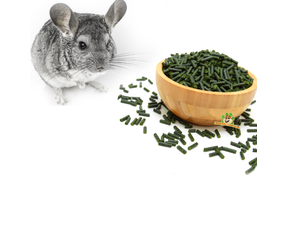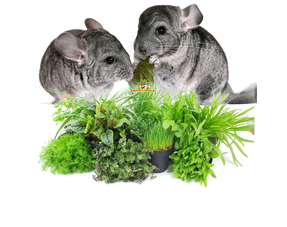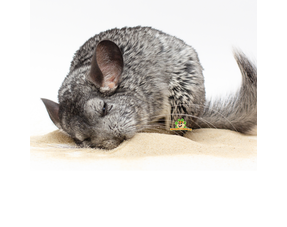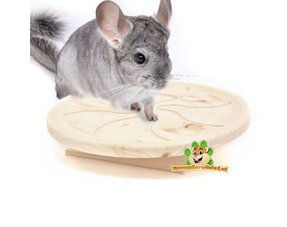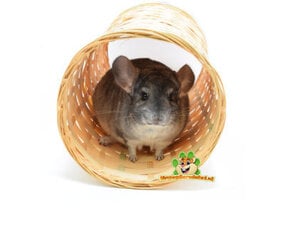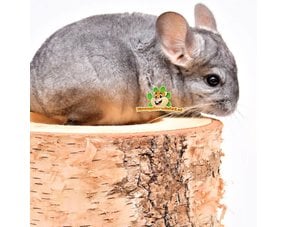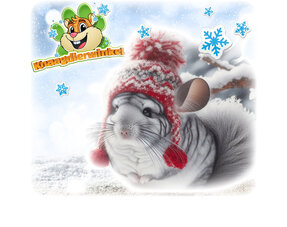Everything for your Chinchilla in the Chinchilla Webshop!
Order everything for your Chinchillas quickly and easily at DRD Rodent Shop ® The Chinchilla Webshop for your Chinchilla!
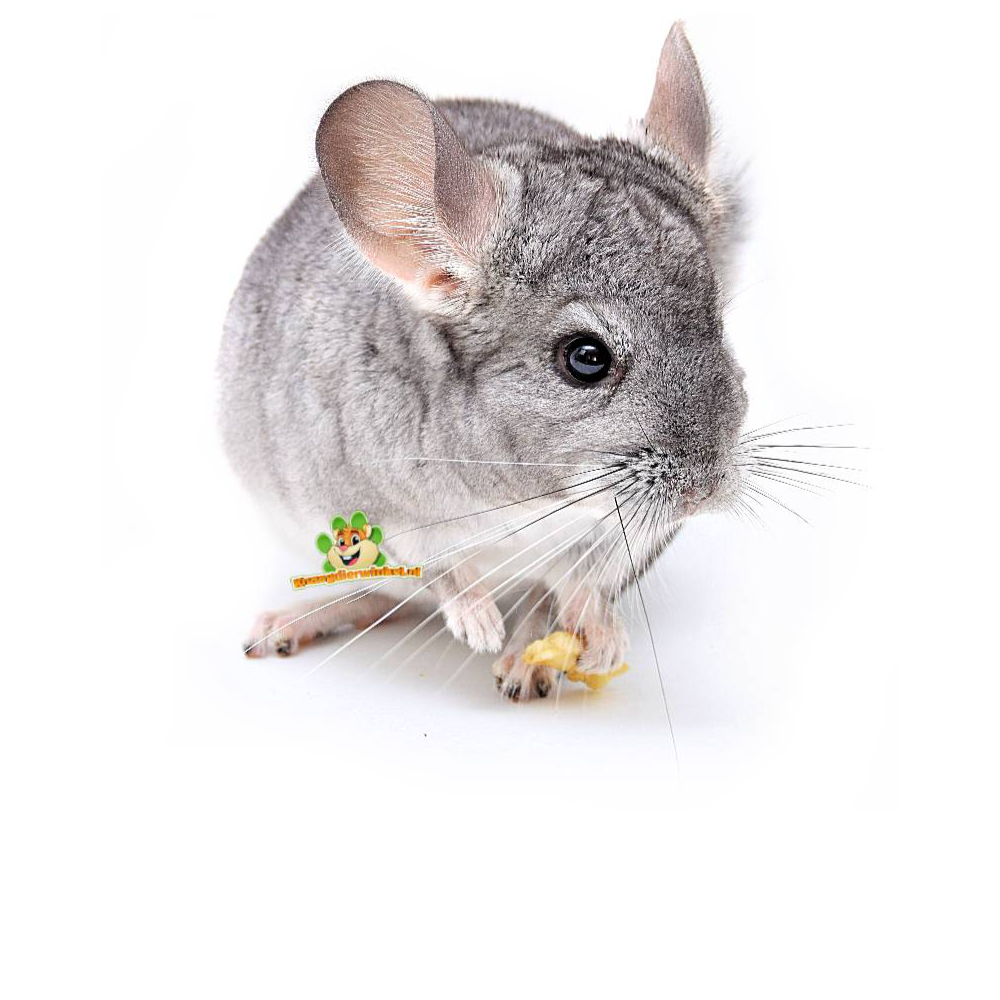 Are you looking for Chinchilla items and supplies? Then you have come to the right place at DRD Knaagdierwinkel ® ! You will find a wide range of Chinchilla items, such as Chinchilla food, toys, houses, plateaus, gnawing material, ground covers and much more.
Are you looking for Chinchilla items and supplies? Then you have come to the right place at DRD Knaagdierwinkel ® ! You will find a wide range of Chinchilla items, such as Chinchilla food, toys, houses, plateaus, gnawing material, ground covers and much more.
Chinchillas are very nice rodents. They are social animals that live in groups. They should therefore always be kept together with at least one other member of the same species. When choosing the articles, we have considered the social character of these animals. Think of spacious houses that they can all fit in and toys with which they can safely entertain themselves for hours. Also, not all products are safe to use for chinchillas. Chinchillas are real rodents. The products in our chinchilla category have been extensively studied and researched by us and have been found to be safe for chinchillas. In short, our specialization is your advantage! In addition, ordering is always easy and fast in the DRD Chinchilla Webshop.
Chinchillas (Chinchilla lanigera) are cute, gentle animals that need attention. They belong to the guinea pig-like rodents and come from the Andes mountains in South America. They are active in the evening and twilight and prefer to sleep during the day.
Chinchillas are small, folivorous/herbivorous (plant-eating) mammals and belong to the order of rodents. They are mainly active at dusk and at night, very social and live in the wild in family groups as a pair and their female offspring. Even if they are kept as pets, they should not be left alone. As a pair or in a group they feel good. A chinchilla can live up to 20 years and reaches a body length of approx. 26 cm and a weight of 400 to 600 g.
Chinchillas originate from South America and live there in rocky mountain slopes near the coast. Their survival is highly threatened and today there are only 2 small remaining populations in the north of central Chile.
The vegetation in their country of origin varies and often shows a desert character. They prefer dry and sparsely vegetated slopes with a loose vegetation consisting of cacti, bromeliads and small shrubs. They make their burrows in rock crevices.
Their soft, thick fur with a hair follicle from which more than 50 hairs grow makes them look like teddy bears, but nothing could be further from the truth. Although Chinchillas look cuddly , most chinchillas are not. They make great pets, but they are sensitive animals, so they need to be handled with care and housed properly. To keep them happy and healthy, they need a special diet that is tailored to the nutritional needs of the Chinchilla. The animals also need a lot of freedom of movement to run and jump. So they are not exactly easy animals to keep.
Housing
 Two chinchillas need at least one square meter of floor surface. For each additional chinchilla, half a square meter is added. The enclosure must be at least 1.5 meters high. Chinchillas can jump incredibly well and are very agile. The bigger the enclosure, the better! It is also important to offer the opportunity to jump with platforms at different heights. However, there should not be too great a difference in height. Keep about 50 cm as the maximum difference in height. There must be a hiding place for each animal in the cage.
Two chinchillas need at least one square meter of floor surface. For each additional chinchilla, half a square meter is added. The enclosure must be at least 1.5 meters high. Chinchillas can jump incredibly well and are very agile. The bigger the enclosure, the better! It is also important to offer the opportunity to jump with platforms at different heights. However, there should not be too great a difference in height. Keep about 50 cm as the maximum difference in height. There must be a hiding place for each animal in the cage.
Chinchillas are real rodents, so it is important to have a rodent-proof cage. The cage must absolutely not be in a draft and the ambient temperature must be between 17 and 25 degrees. Chinchillas cannot tolerate heat very well. In addition, the cage must be in a place where it is quiet during the day. The animals are active at night and sleep during the day. The chinchillas must have the opportunity to take a sand bath with special chinchilla sand. The chinchillas need this to care for their fur. In addition, there must of course be a food bowl and a water bottle.
All Chinchilla information at a glance
In the table below we have clearly presented all information about the Chinchilla for you.
| Chinchilla |
|
| Stay LxB together min. |
minimum 1m2 ground surface |
| Ground cover Kind |
not dusty and non-clumping |
| Power supply |
unlimited low protein hay and chinchilla food |
| Nesting material |
no |
| To change Stay after approx. |
Once every 2 to 4 weeks |
| Running wheel Diameter min. |
46 cm |
| Little house or hiding place |
Multiple Depending on group size At least 1 larger house |
| Toys Type and purpose |
Hiding, gnawing, discover, tunnels, jump |
| Sandbox |
Yes, required |
| Drinks Administer via |
Bottle made of rodent-proof material |
| Prevention Parasite, worm |
No need for preventive treatment, Not easily affected by skin parasites due to the density of the coat |
| Way of life Together or alone |
Social Chinchillas should be kept in pairs at least. Always ask the breeder or shelter for advice. |
| Particulars |
Susceptible to skin fungus sensitive digestion, should not have too much fat, protein and sugars |




